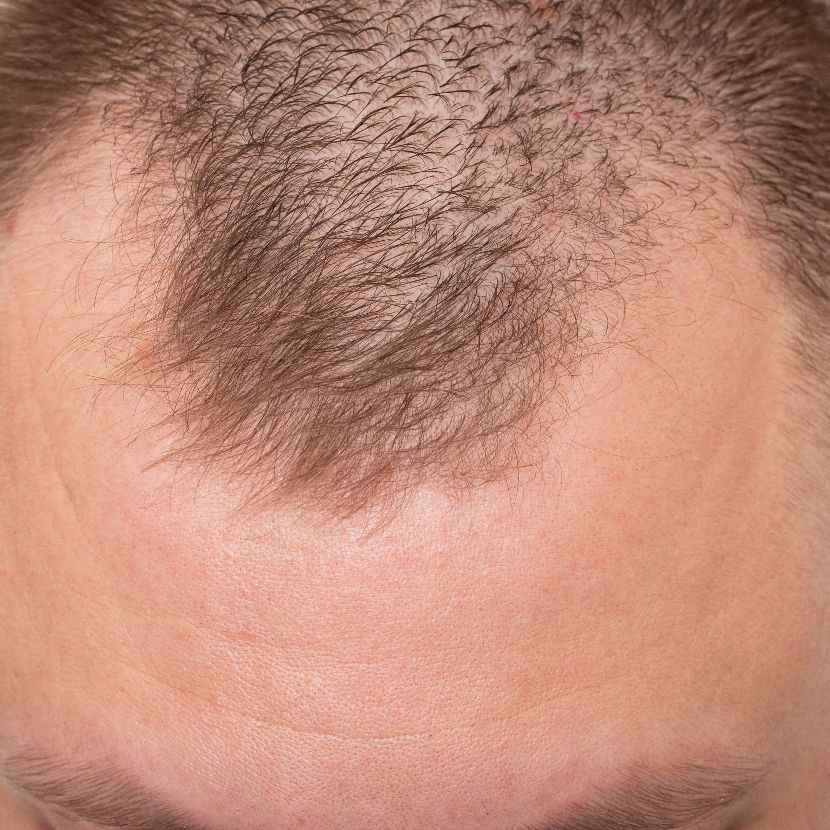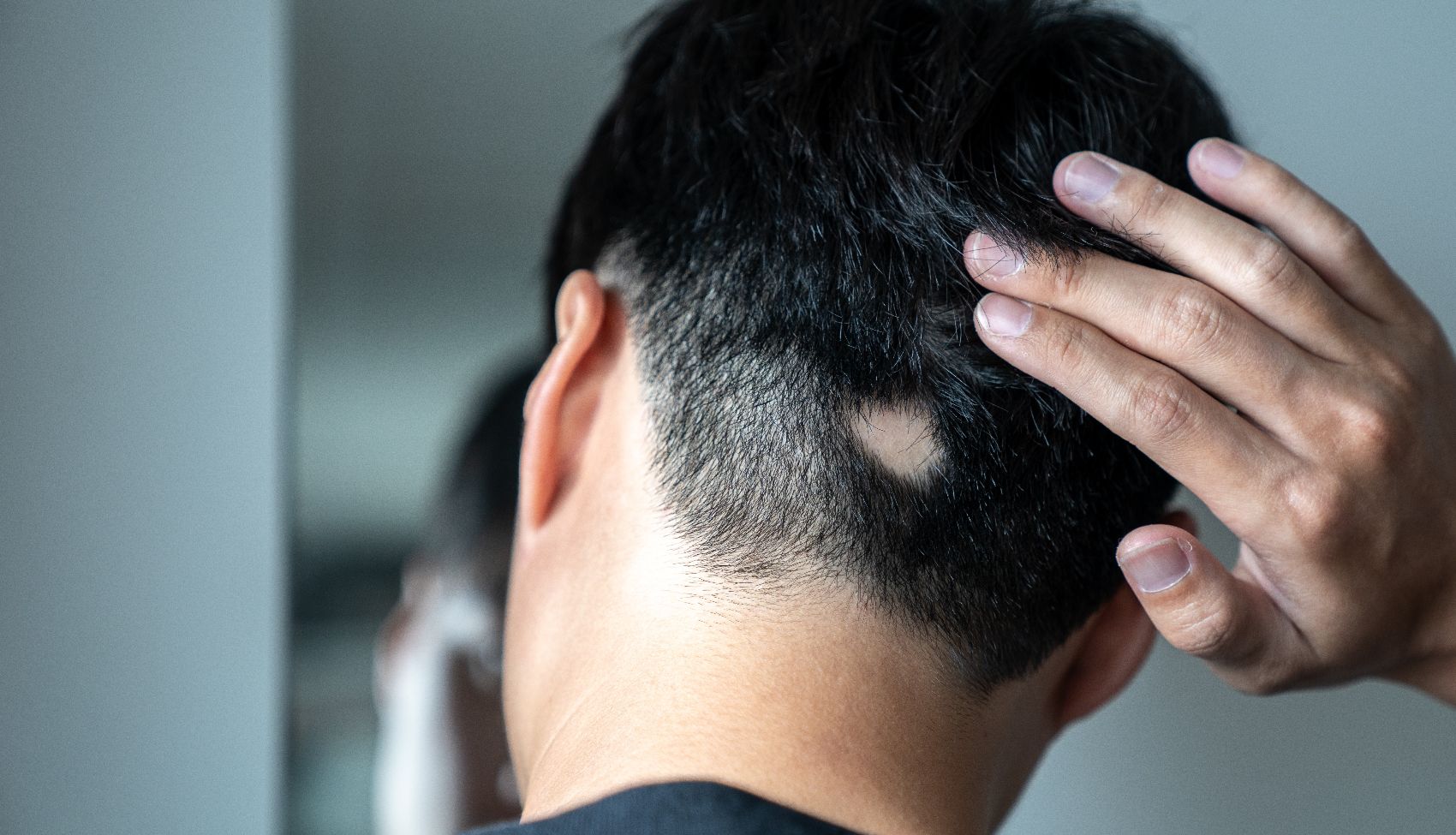Alopecia is a medical term whose different types refer to the loss of hair follicles in a much greater quantity than normal.
A condition that affects millions of people around the world, alopecia can be a temporary or permanent condition and can affect all types of people, regardless of age or gender.
Alopecia refers to a medical condition that results in excessive hair loss and can occur anywhere on the body, but mostly on the scalp.
From the loss of hair follicles in small areas of the body or scalp to generalized baldness, this is a much more common condition than you might think.
Alopecia areata, for example, is one of several types of alopecia that exist and affects more than 150 million people worldwide.
Because it is so common and because it causes different levels of concern, it is essential to know all the types of alopecia, as well as to understand all their causes, symptoms and treatment options.
There are many types of alopecia. Each will have its own cause and specific characteristics. However, it is possible to classify alopecia into two main types: the scarring type and the non-scarring type.

Scarring alopecia, as the name suggests, refers to hair loss due to permanent destruction of the hair follicles as a result of infection, traction, trauma or a scalp tumor, as well as inflammatory diseases such as lupus erythematosus or scleroderma.
In other words, the hair follicles are replaced by scar tissue and there is an irreversible loss of hair as it is no longer able to grow.

Non-scarring alopecia, on the other hand, can be caused by the most diverse factors, including genetic, hormonal, immunological, nutritional, infectious, medicinal and even emotional factors.
In the vast majority of cases, this is the most common type of alopecia, which includes subtypes such as androgenetic baldness (male or female), areata (autoimmune), telegenic effluvium (due to nutritional deficiencies or hormonal changes), trichotillomania (an emotional disorder that leads a person to pull out their hair), among others.
Androgenetic alopecia is the most common type of alopecia. Generally associated with a combination of genetic and hormonal factors, it can affect both men and women, although it manifests itself differently in males and females.
This is also why this condition can also be known as male pattern baldness or female pattern baldness.
In men, this pattern begins on the frontal line and top of the head and can lead to complete baldness. In women, there is a noticeable thinning of the hair in general and along the entire scalp.
In the male pattern characterized by male androgenetic alopecia we find the most typical pattern of hair loss and thinning - starting with the side entrances at the front of the head and/or the top of the scalp.
Over time, these two areas eventually meet, coming together and leaving just a strip of hair on the sides and back of the head.
On the other hand, in the female pattern, hair loss manifests itself in a diffuse thinning of the hair along the entire scalp. However, in women, it is very rare for the condition to lead to complete baldness.
Caused by an autoimmune condition, alopecia areata is characterized by hair loss in small circular areas along the scalp, although it can occur anywhere on the body.
This hair loss is caused by the immune system itself attacking the hair follicles and it is estimated that around 2% of the population suffer from this condition.
In these cases, hair treatment is possible and is used to stimulate hair growth again.
Trichotillomania is considered to be an emotional or psychological disorder that leads people to feel an irresistible urge to pull out their own hair, thus leading to hair loss in certain areas of the scalp.
The affected areas tend to have an irregular shape, depending on each person's habits and varying in both size and location.
Lastly, telegenic effluvium is a type of non-scarring alopecia, usually caused by an exceptional situation, such as periods of intense stress, pregnancy, certain illnesses and the use of certain medications.
It is very common for this hair loss to be temporary, but it is always important to assess the situation with a specialist doctor in order to start any hair treatments that may be necessary.

Given that alopecia is mainly characterized by hair loss, this turns out to be the main symptom to pay attention to: the loss of an excessive amount of hair.
By excessive, we mean the loss of hundreds of hairs a day, since it is perfectly normal to lose between 50 and 100 hairs every day. When this number is exceeded, it is recommended that you see a professional who specializes in hair loss.
However, to be able to identify alopecia properly, you should also pay attention to symptoms such as:
The cure for alopecia depends on the type and severity of the condition. However, it should be noted that the most appropriate term is "reversal".
In other words, there are some types of alopecia whose effects may be reversible, while others may be irreversible. To determine which is the case, an initial assessment should be made with a specialist doctor.
Alopecia areata, for example, may be perfectly reversible with the application of a specific hair treatment aimed at regenerating the hair follicles and thus restoring the hair.
Androgenetic alopecia, on the other hand, is a chronic condition that can be managed and even reversed, depending on the case and its severity, when treatment begins, but it cannot be cured.
Even so, in both cases, FUE hair transplantation may be a suitable solution for restoring hair volume and renewing hair follicle growth.
To treat alopecia, it's important to start by understanding exactly what type of alopecia the patient is dealing with.
This analysis is only possible through a medical assessment, where the diagnosis is made and the most appropriate treatment plan is recommended.